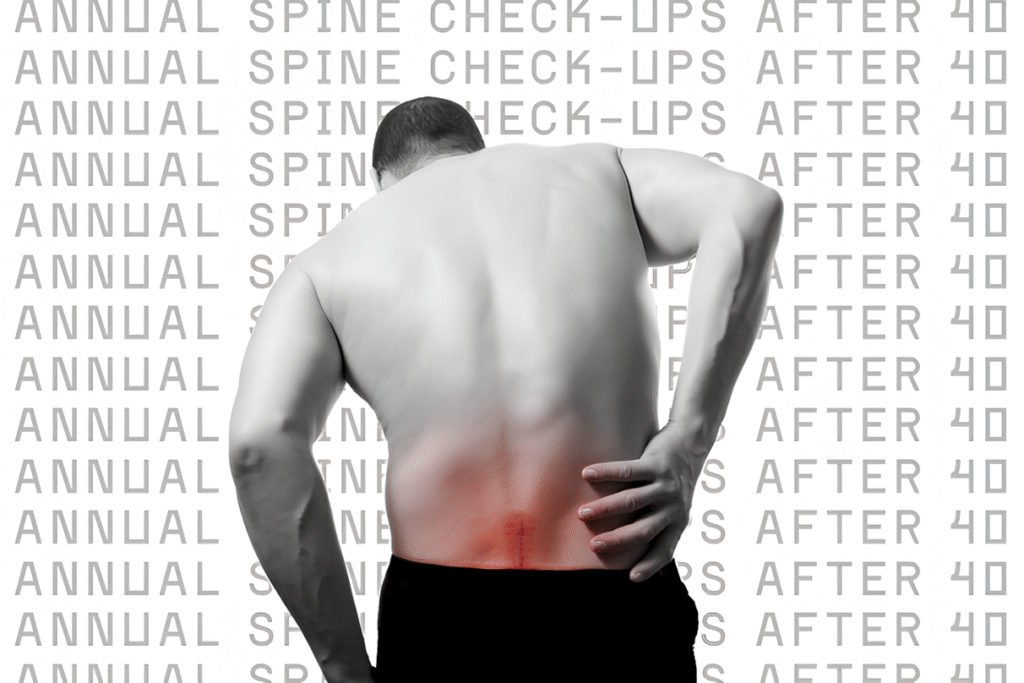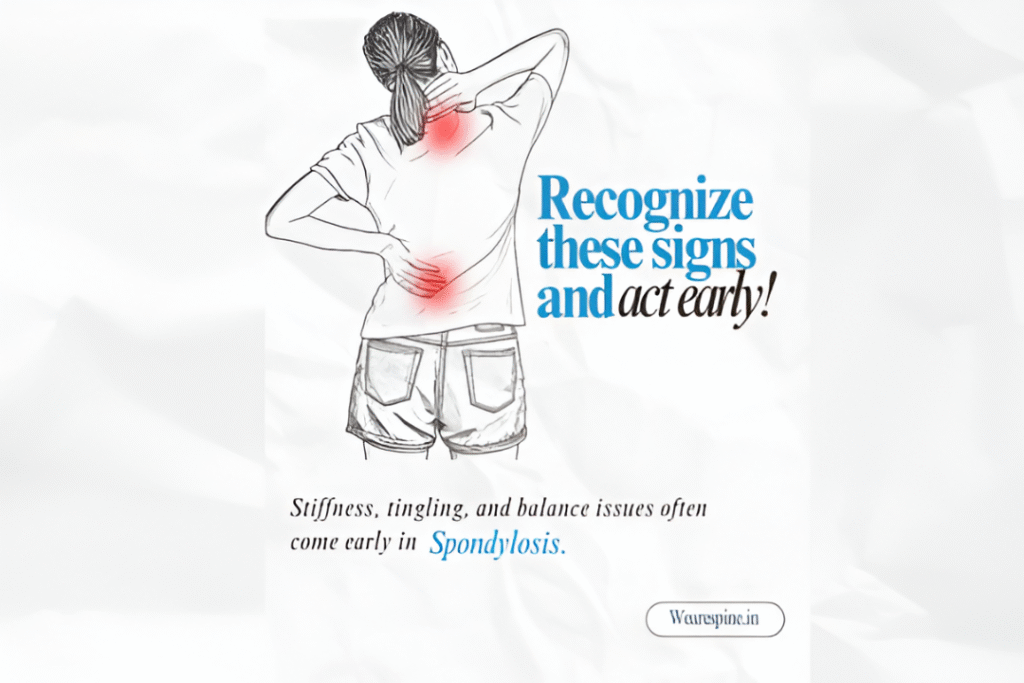
Turning 40 Is Not the End—But It’s the Time to Act
When we think of age-related check-ups, we often focus on diabetes, blood pressure, or cholesterol. But there’s one vital area that most people—especially in India—tend to ignore: spine health. The spine is central to everything we do—from walking and lifting to simply sitting or sleeping. Yet, it is rarely given attention until pain begins to interfere with daily life.
At WeAreSpine, we believe in prevention before pain. That’s why we strongly recommend annual spine check-ups after the age of 40. Whether you’re a working professional, homemaker, or retiree, taking care of your spine at this stage is crucial for ensuring a pain-free, mobile, and independent life.
What Happens to the Spine After 40?
The spine begins to undergo gradual wear and tear after the age of 30, but it’s often around 40 years that symptoms start appearing—especially if there has been poor posture, repetitive physical work, or injury.
Here’s how the spine changes with age:
- Disc Dehydration: Intervertebral discs lose moisture and elasticity, reducing their cushioning effect.
- Joint Stiffness: Spinal joints lose flexibility, making movement more difficult.
- Degenerative Changes: Conditions like osteoarthritis, spondylosis, and spinal stenosis begin to appear.
- Muscle Weakness: Supporting muscles weaken, especially in sedentary lifestyles, reducing stability.
- Bone Loss: Women in particular face a steep drop in bone density post-menopause, increasing risk of fractures.
These changes are a natural part of aging, but they can be monitored and managed through regular screenings.
Why Spine Check-Ups Are Crucial After 40
Here’s why scheduling an annual spine check-up after 40 can save you from serious complications later in life:
Most spinal problems begin silently. Conditions like degenerative disc disease or cervical spondylosis can be asymptomatic for years before suddenly causing severe pain, numbness, or mobility issues. Regular exams help detect these early.
Untreated conditions such as spinal stenosis or herniated discs can compress spinal nerves, leading to irreversible damage. Timely intervention prevents long-term complications like sciatica or limb weakness.
Women over 40, especially postmenopausal women, are at increased risk of vertebral compression fractures. A DEXA scan and spine screening can detect bone thinning early.
A spine check-up isn’t just about tests. It’s also about understanding your body mechanics and getting personalized advice on posture, exercises, and ergonomics.
With early detection, most spine conditions can be managed non-surgically through physiotherapy, bracing, or posture correction—avoiding costly procedures.
Common Spine Problems Detected After 40
1. Degenerative Disc Disease (DDD)
- Occurs when spinal discs dry out and shrink.
- Symptoms: back pain, stiffness, and radiating pain to arms or legs.
2. Lumbar Spondylosis
- Wear and tear of the lower back vertebrae and joints.
- Leads to stiffness, pain on standing or walking.
3. Cervical Spondylosis
- Age-related changes in neck vertebrae.
- Symptoms include neck pain, dizziness, and tingling in the arms.
4. Sciatica
- Compression of the sciatic nerve, often due to a slipped disc.
- Causes shooting pain from the lower back down to the legs.
5. Spinal Stenosis
- Narrowing of the spinal canal that presses on nerves.
- Can lead to numbness, tingling, or weakness in the legs.
6. Osteoporosis-related Compression Fractures
- More common in post-menopausal women.
- Fragile vertebrae collapse under pressure, causing severe back pain and height loss.
Many of these conditions start silently and worsen over time. Regular check-ups allow early intervention.

What Happens During a Spine Check-Up at WeAreSpine?
When you schedule a consultation through WeAreSpine.in, here’s what you can expect:
Detailed Medical History Review
Understanding your lifestyle, profession, prior injuries, or family history.
Posture and Gait Analysis
Observing how you walk, stand, and sit—key indicators of spinal misalignment or muscular imbalance.
Neurological Examination
Checking reflexes, muscle strength, coordination, and any nerve involvement.
Imaging Tests (as needed)
X-rays for spinal structure and alignment
MRI to examine discs, nerves, and spinal canal
DEXA scan to check for osteoporosis
Individualized Plan
You’ll receive a tailored treatment or prevention plan based on findings—this may include physiotherapy, yoga/stretching routines, ergonomic tips, or in advanced cases, surgical consultation.
Why Annual Check-Ups Are Especially Important for Women
Women face unique risks due to hormonal changes post-menopause:
- Loss of estrogen accelerates bone loss.
- High prevalence of osteoporosis, increasing spinal fracture risk.
- Back pain is often underreported by women, seen as a ‘normal part of life’.
At WeAreSpine, we prioritize spine health in women over 40 by incorporating bone density screenings and offering advice tailored to female physiology.
Urban vs. Rural Spine Health Challenges
Whether you’re in a city or a village, spinal health needs attention. However, challenges differ.
Urban Adults (40+)
- Desk jobs → Poor posture, sedentary lifestyle
- Stress → Muscle tightness, neck pain
- Screen time → Cervical strain
- Lack of exercise → Weak core muscles
Rural/Manual Workers (40+)
- Physical labor → Repeated lifting, bending
- Ignoring pain → Delayed treatment
- Limited access to spine specialists
- Cultural stigma around seeking help
Spine check-ups are beneficial across demographics, but awareness and accessibility are key.
What You Risk by Skipping Annual Spine Check-Ups
- Progression from mild pain to chronic, disabling pain
- Missed early diagnosis of nerve compression or spinal stenosis
- Risk of fractures going undetected (especially in women)
- Delay in seeking non-surgical interventions
- Sudden onset of debilitating conditions like slipped disc
Remember, spine diseases are progressive. Skipping early screening often means facing more invasive treatments and prolonged recovery later.
How to Maintain a Healthy Spine After 40
Apart from annual check-ups, here are spine care tips we recommend:
Stay Active
Regular walking, yoga, and stretching reduce stiffness and strengthen back muscles.
Strengthen Your Core
A strong core provides stability and reduces load on the lower back.
Practice Good Posture
Use ergonomic chairs, avoid slouching, and take frequent breaks from sitting.
Lift Properly
Bend from the knees, not the back. Avoid twisting while lifting.
Nutrition Matters
Ensure adequate intake of calcium and vitamin D to prevent bone loss.
Don’t Ignore Pain
Persistent pain is not “normal aging”—it’s your body asking for help.
Why Choose WeAreSpine for Your Annual Spine Check-Up?
At WeAreSpine, we are a community of India’s leading spine surgeons, physiotherapists, and rehabilitation specialists committed to evidence-based, patient-centered care.
We offer:
- Preventive spine assessments
- Second opinions before surgery
- Advanced diagnostics
- Minimally invasive spine solutions
- Holistic management plans
Our mission is to help you age with mobility, independence, and comfort—without surgery whenever possible.
Your Spine Deserves Annual Attention
You service your car every year. You get annual blood tests.
Why not your spine?
Once back pain becomes disabling, it’s far harder to reverse. But with simple yearly spine screenings after 40, you can avoid surgery, maintain mobility, and enjoy a healthier life.
Don’t wait for the pain to become unbearable. Start early. Start today.
Book your spine assessment at WeAreSpine.in and take the first step toward a pain-free future.